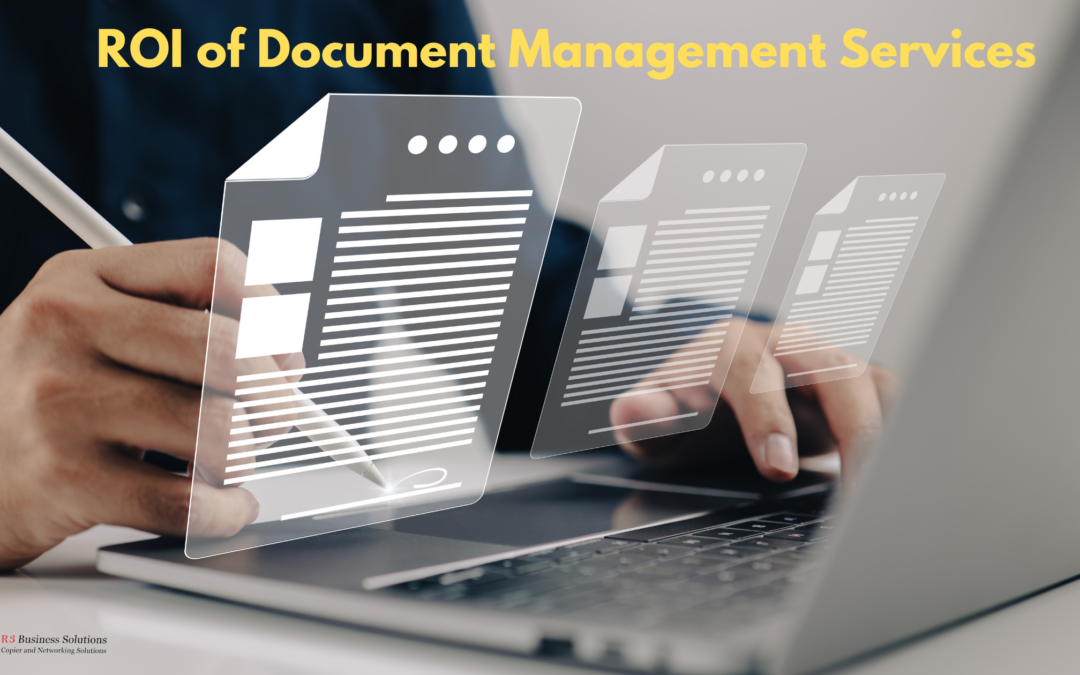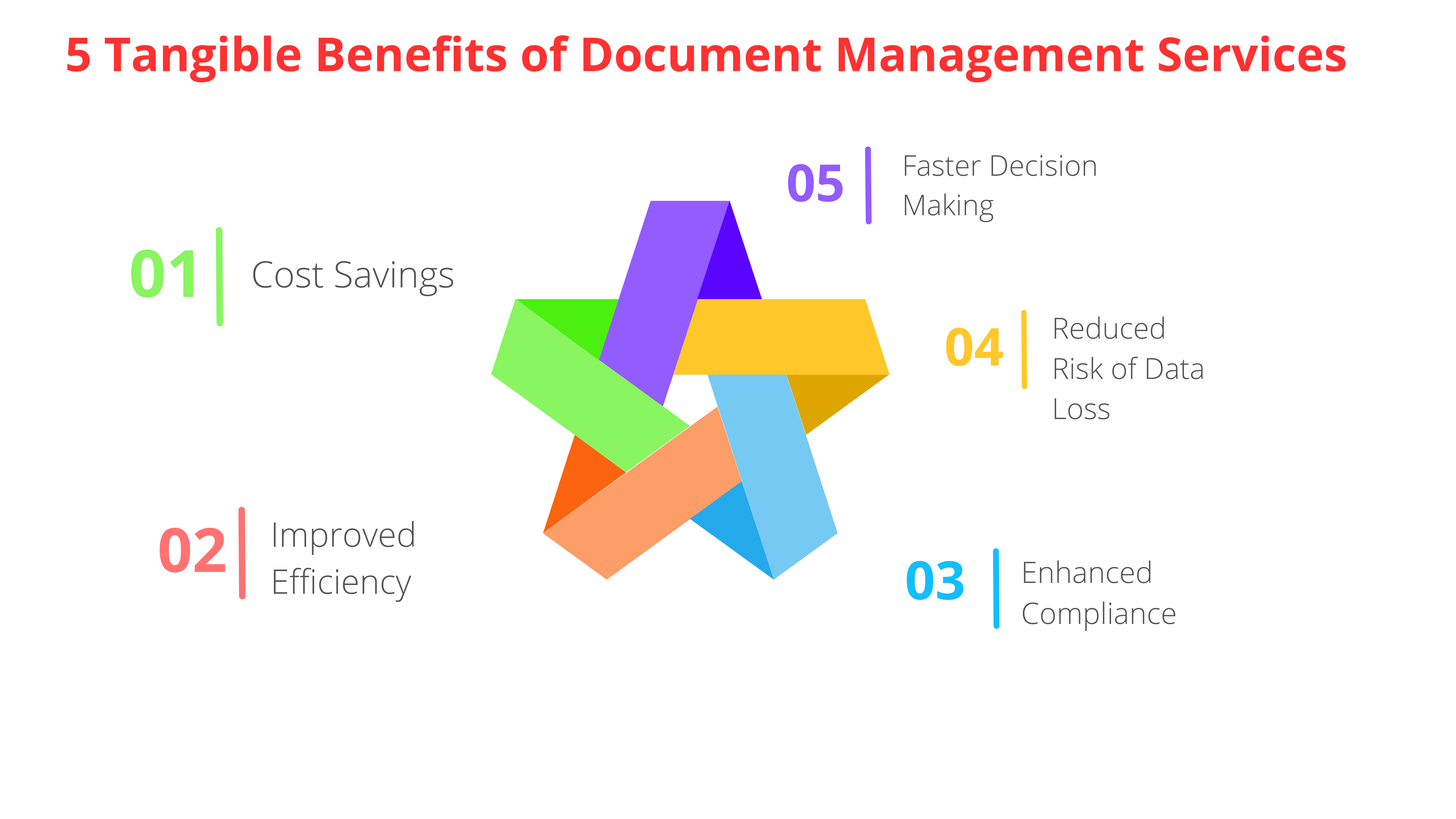Efficiency and productivity reign supreme in the dynamic landscape of contemporary business. Every organization, regardless of size or industry, generates and handles a vast amount of documents and data daily. Managing these documents efficiently is not only essential for operational smoothness but also for maintaining a competitive edge. Here’s where the magic of Document Management Services unfolds.
Document management services encompass a range of solutions designed to streamline the creation, storage, retrieval, and sharing of documents within an organization. But beyond the immediate benefits of improved workflow and organization, understanding the return on investment (ROI) of document management services is crucial for businesses looking to make informed decisions about their operational strategies.
What is Document Management ROI?
ROI, in the context of document management services, refers to the tangible and intangible benefits gained by an organization compared to the investment made in implementing and utilizing these services. It’s about assessing the value generated from improved document handling processes against the costs involved in acquiring and maintaining the document management system.
Tangible Benefits of Document Management Services
- Cost Savings: Implementing document management services often leads to significant cost savings by reducing paper usage, printing costs, storage space requirements, and labor associated with manual document handling processes.
- Improved Efficiency: Streamlining document workflows, automating repetitive tasks, and enabling easy document retrieval and sharing enhance overall productivity, allowing employees to focus on value-added activities.
- Enhanced Compliance: Many industries have stringent regulatory requirements regarding document retention, security, and privacy. Document management services help ensure compliance with these regulations, reducing the risk of fines or legal issues.
- Reduced Risk of Data Loss: Centralized storage, backup, and disaster recovery capabilities provided by document management systems mitigate the risk of data loss due to hardware failures, natural disasters, or human error.
- Faster Decision Making: Quick access to accurate and up-to-date information enables faster decision-making processes, leading to improved agility and responsiveness to market changes.
Intangible Benefits of Document Management Services
- Improved Customer Satisfaction: Quicker response times, accurate information retrieval, and enhanced communication facilitated by document management services contribute to higher levels of customer satisfaction.
- Employee Morale and Engagement: Simplifying document-related tasks and eliminating tedious manual processes can boost employee morale and engagement by allowing them to focus on more meaningful work.
- Brand Reputation: Efficient document management reflects positively on an organization’s professionalism and reliability, enhancing its brand reputation in the eyes of customers, partners, and stakeholders.
Calculating Document Management ROI
To assess the ROI of document management services, businesses need to consider both the tangible cost savings and the intangible benefits mentioned above. A comprehensive ROI analysis typically involves:
- Quantifying Costs: This includes initial investment in software, hardware, implementation, training, and ongoing maintenance and support.
- Estimating Savings: Identifying areas where document management services lead to cost reductions, such as paper, printing, storage, and labor costs.
- Assigning Values to Intangible Benefits: While intangible benefits are harder to quantify, assigning subjective values to factors like improved productivity, customer satisfaction, and brand reputation helps in evaluating their impact.
- Measuring ROI Over Time: Document management ROI is not static and may evolve over time as the organization grows, technology advances, and business needs change. Regularly monitoring and reassessing ROI ensures that the document management solution continues to deliver value.
Case Study: Realizing Document Management ROI
Let’s consider a hypothetical scenario where a medium-sized manufacturing company implements document management services:
Initial Investment:
- Document Management Software: $10,000
- Hardware (Scanners, Servers): $5,000
- Implementation and Training: $3,000
- Total Initial Investment: $18,000
Annual Savings:
- Paper and Printing Costs: $6,000
- Storage Space Rental: $3,000
- Labor Savings (10% Efficiency Improvement): $15,000
- Total Annual Savings: $24,000
Intangible Benefits:
- Improved Customer Satisfaction: Subjective Value: High
- Employee Morale and Engagement: Subjective Value: Medium
- Brand Reputation: Subjective Value: High
ROI Calculation: ROI = (Annual Savings + Intangible Benefits) / Initial Investment ROI = ($24,000 + High + Medium + High) / $18,000 ROI = ($24,000 + 3) / $18,000 ROI = 1.33
In this example, the organization achieves an ROI of 1.33, indicating that for every dollar invested in document management services, they receive $1.33 in return.
Conclusion
Understanding the ROI of Document Management Services goes beyond simple cost savings. It involves recognizing the broader impact on efficiency, compliance, risk mitigation, and stakeholder satisfaction. By conducting a comprehensive ROI analysis, businesses can make informed decisions about investing in document management solutions, ensuring they derive maximum value from their implementation. In today’s competitive landscape, unlocking the value of efficient document management is not just a choice but a necessity for sustained success.

